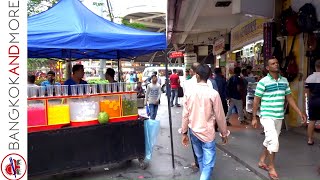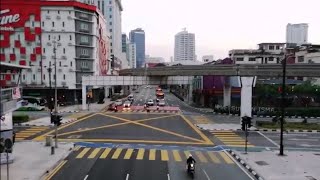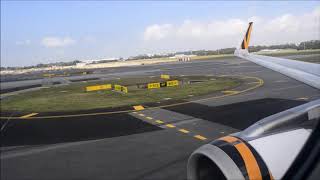Wednesday, 24 December, 2025г.
















Где искать: по сайтам Запорожской области, статьи, видео ролики
пример: покупка автомобиля в Запорожье
KUALA LUMPUR, PUBLIC TRANSPORT IN KUALA LUMPUR, MONORAIL, INDIAN FOOD IN KUALA LUMPUR
KUALA LUMPUR, PUBLIC TRANSPORT IN KUALA LUMPUR, MONORAIL, INDIAN FOOD IN KUALA LUMPUR Kuala Lumpur officially the Federal Territory of Kuala Lumpur, or commonly known as KL, is the national capital of Malaysia as well as its largest city. The only global city in Malaysia, it covers an area of 243 km2 (94 sq mi) and has an estimated population of 1.73 million as of 2016.[7] Greater Kuala Lumpur, also known as the Klang Valley, is an urban agglomeration of 7.25 million people as of 2017.[8] It is among the fastest growing metropolitan regions in South-East Asia, in both population and economic development.
Kuala Lumpur is the cultural, financial and economic centre of Malaysia and home to the Parliament of Malaysia, and the official residence of the Malaysian King (Yang di-Pertuan Agong), the Istana Negara. The city once held the headquarters of the executive and judicial branches of the federal government as well, but they were moved to Putrajaya in early 1999.[9] Some sections of the judiciary still remain in Kuala Lumpur.
Kuala Lumpur is one of three Federal Territories of Malaysia,[10] enclaved within the state of Selangor, on the central west coast of Peninsular Malaysia.[11] Since the 1990s, the city has played host to many international sporting, political and cultural events including the 1998 Commonwealth Games. Kuala Lumpur has undergone rapid development in recent decades. It is home to the tallest twin buildings in the world, the Petronas Twin Towers, which have become an iconic symbol of Malaysia's futuristic development.
Kuala Lumpur has a comprehensive road system that is supported by extensive public transport networks such as the Mass Rapid Transit (MRT), Light Metro (LRT), monorail, elevated Bus Rapid Transit, commuter rail and airport rail link. Kuala Lumpur is one of the leading cities in the world for tourism and shopping. It is the seventh most visited city in the world.[12] The city is also home to three of the world's 10 largest malls.[13]
Kuala Lumpur has been ranked by the Economist Intelligence Unit at No. 70 out of 140 cities in a global ranking of liveable cities, and second in Southeast Asia after Singapore at No. 35.[14] Forbes has also named Kuala Lumpur at No. 6 in its list of 10 best cities to retire abroad, and the best in Asia, with factors include world class healthcare, affordable cost of living and widely spoken English.[15] Kuala Lumpur was named as one of the New7Wonders Cities.[16] Safe Cities Index 2017 has put Kuala Lumpur 31st on its world safest cities list, the highest ranked city for a developing country. Protected by the Titiwangsa Range in the east and Indonesia's Sumatra Island in the west, Kuala Lumpur is safe from strong winds and has a tropical rainforest climate (Köppen climate classification Af), which is warm and sunny, along with abundant rainfall, especially during the northeast monsoon season from October to March. Temperatures tend to remain constant. Maximums hover between 32 and 35 °C (90 and 95 °F) and sometime hit 40 °C (104.0 °F), while minimums hover between 23.4 and 24.6 °C (74.1 and 76.3 °F) and have never fallen below 14.4 °C (57.9 °F).[68][69] Kuala Lumpur typically receives minimum 2,600 mm (100 in) of rain annually; June and July are relatively dry, but even then rainfall typically exceeds 131 millimetres (5.2 in) per month.
Flood is a frequent occurrence in Kuala Lumpur after heavy downpours, especially in the city centre because the structural irrigation lacks behind the intensive development within the City.[70] Smoke from forest fires of nearby Sumatra sometimes casts a haze over the region. It is a major source of pollution in the city together with open burning, emission from motor vehicles and construction work. Tourism plays an important role in the city's service-driven economy. Many large worldwide hotel chains have a presence in the city. One of the oldest hotels is the Hotel Majestic. Kuala Lumpur is the sixth most visited city in the world, with 8.9 million tourists per year.[94][95] Tourism here is driven by the city's cultural diversity, relatively low costs, and wide gastronomic and shopping variety. MICE tourism, which mainly encompasses conventions— has expanded in recent years to become a vital component of the industry, and is expected to grow further once the Malaysian government's Economic Transformation Programme kicks in, and with the completion of a new 93,000m2-size MATRADE Centre in 2014.[96] Another notable trend is the increased presence of budget hotels in the city.
Negara), Batu Caves, the National Museum, Islamic Arts Museum, Central Market, KL Bird Park, Aquaria KLCC, the National Monument, and religious sites such as the Sultan Abdul Samad Jamek Mosque.
Теги:
KUALA LUMPUR KUALA LUMPUR CITY KUALA LUMPUR TRAVEL KUALA LUMPUR VLOG PUBLIC TRANSPORT KUALA LUMPUR INDIAN FOOD INDIAN FOOD KUALA LUMPUR WALK AROUND KUALA LUMPUR monorail monorail in Kuala Lumpur train trains trains in kuala lumpur transport transport in kuala lumpur public transort metro metro in Kuala Lumpur tube tube in Kuala Lumpur
Похожие видео
Мой аккаунт


 У вашего броузера проблема в совместимости с HTML5
У вашего броузера проблема в совместимости с HTML5

![Malaysian Street Food - A must have food in Malaysia [Halal]](/images/mq/b/45/9FEXPFNs0z1yBd.jpg)
